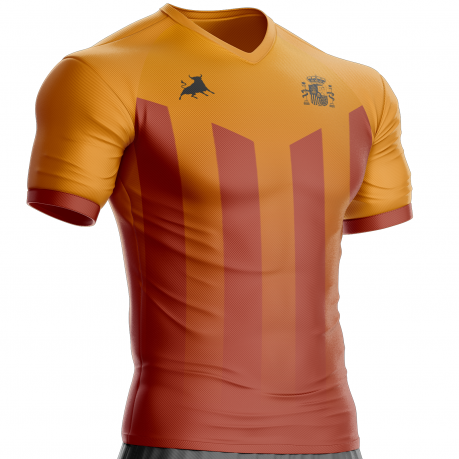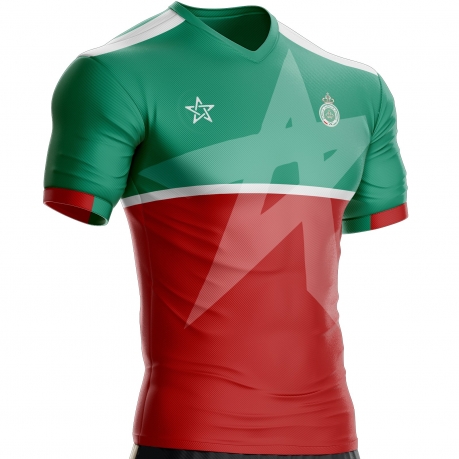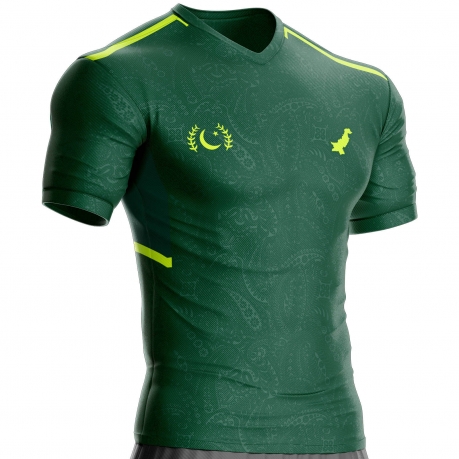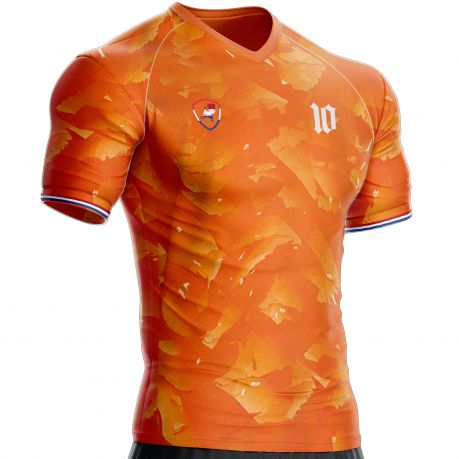The Story Behind the Badge: Exploring Football Club Logos

Have you ever noticed the emotion that crosses a supporter's face when they see the logo of their football club? This simple image, engraved on a jersey or a flag, is much more than a simple decorative element. It represents a history, an identity and a feeling of belonging to a vibrant community.
In this article, we will explore the fascinating world of football club logos. Let's discover their origins, their meanings and the impact they have on supporters and the entire football culture.
Origins rooted in history
Football club logos did not appear by chance. They are the result of a long evolution, often linked to local history and traditions. Some logos, like that of Real Madrid, feature royal symbols, while others, like that of Bayern Munich, refer to geographical or historical elements.
More than just an image
Beyond their visual aspect, football club logos have major symbolic importance. They represent the soul of the club, its values and its ambitions. They provide a rallying point for supporters, allowing them to feel connected to a community larger than themselves.
A journey through cultures
By exploring club logos around the world, we discover a true mosaic of cultures and traditions. From the bright colors and exotic patterns of South American clubs to the clean, elegant designs of European clubs, each logo tells a unique story.
A universal language
In a world where football is a universal language, football club logos transcend borders and cultures. They constitute a powerful means of communication, capable of bringing together millions of people around the same passion.
So the next time you see a football club logo, take the time to look at it carefully. There is a fascinating story to be discovered behind this simple image.
The power of club logos
Far from being simple decorative images, football club logos are powerful symbols that crystallize supporters' identity, pride and sense of belonging. More than a simple visual identification, they constitute a truly universal language capable of bringing together millions of people around the same passion.
Symbols of belonging
Present on jerseys, scarves, flags and a multitude of supporter objects, club logos accompany fans in all their manifestations of passion. They become extensions of themselves, signs of belonging to a unique and vibrant community.
Exploring iconic logos
Let's take the time to decipher some logos of famous clubs around the world:
Real Madrid (Spain) : Created in 1902, the Real Madrid logo proudly displays the royal crown, symbol of the historic link between the club and the Spanish monarchy. The color white, for its part, represents the purity and nobility of the club's values.
Manchester United (England) : The famous "red devil" of the English club, which appeared in 1902, has its origins in a nickname given by the press at the beginning of the 20th century. It symbolizes the fighting spirit and attacking play that Manchester United are known for.
Juventus (Italy) : The “Old Lady” logo, founded in 1897, features a black and white crest topped with a crown and a bull. These elements evoke the strength, perseverance and pride of one of the most prestigious clubs in Italy.
Bayern Munich (Germany) : The Bayern logo, created in 1900, features the colors of Bavaria, blue and white, and represents a coat of arms with a stylized lion. This symbol evokes the power, tradition and Bavarian spirit that animate the club.
Paris Saint-Germain (France) : The PSG logo, born in 1970, combines the Eiffel Tower, symbol of the city of lights, with the fleur-de-lys, heritage of ancient French royalty. This combination represents the club's ambition to shine both nationally and internationally.
By exploring other logos like those of Santos (Brazil), Boca Juniors (Argentina) or the New York Red Bulls (United States), we discover a multitude of unique stories and meanings. Each element, each color and each symbol tells a part of the history and identity of the club.
Creating a logo: a thoughtful process
Designing a football club logo is more than just a design exercise. It is a thoughtful process that aims to capture the very essence of the club, its values and its history in a simple and effective image. Designers must take into account many elements such as traditional colors, strong symbols and the club's heritage to create a logo that will unite supporters.
Football logos and culture: a reflection of the world
Football club logos do not live in isolation. They often reflect the wider football culture in a given country. In South America, for example, logos are often characterized by bright colors and exotic designs, reflecting the joy and passion of football in this region of the world. In Europe, logos often adopt a more refined and elegant style, in keeping with the tradition and history of European football.
The future of club logos
In the era of globalization and digital technology, football club logos are bound to evolve. The integration of new technologies, the influence of design trends and the challenge of international influence will probably play an important role in the design of tomorrow's logos.
Will they be able to maintain their power to unite supporters while adapting to a constantly changing world? This is a fascinating question that only the future will tell us.
**Coming soon, we'll explore some iconic logos in detail and dive into the history and meaning behind these images
Continued exploration of iconic logos
Let's continue our journey through football club logos:
Santos FC (Brazil) : Founded in 1912, the Santos logo is recognizable by its black and white colors and its two golden stars. These stars symbolize the two Club World Cups won by the legendary Pelé in the Santos jersey. The central coat of arms represents the port of Santos, coastal city and birthplace of the club.
Boca Juniors (Argentina) : Created in 1905, the Boca Juniors logo is dominated by the lower half of a human face, colored blue and yellow, representing a sailor called "la chancha" (the fly). This nickname comes from the port district of La Boca, where the club was born, and symbolizes the working class and the fighting spirit of the supporters.
New York Red Bulls (United States) : Relaunched in 1994, the Red Bulls logo is a stylized red bull charged with energy, reflecting the team's competitive spirit and attacking style of play. The colors red, yellow and black refer to the colors of the energy drink Red Bull, the club's main sponsor.
These few examples illustrate the diversity and richness of meanings that football club logos can contain. They are true concentrates of history, culture and passion, and constitute an essential element of a club's identity.
Creating a logo: a thoughtful process
Designing a football club logo is an important task that should not be taken lightly. Designers must consider several key elements:
Club history and traditions : Traditional colors, nicknames and historical symbols should be integrated into the logo to ensure continuity with the past.
The club's values : The logo must reflect the values that the club wishes to convey, such as sportsmanship, fair play, team spirit or combativeness.
The identity of supporters : The logo must be attractive and unifying for supporters, taking into account their tastes and expectations.
Readability and effectiveness : The logo must be easily identifiable and understandable, even on a small scale. It must also be adaptable to different media (jerseys, derivative products, etc.).
A consultation and validation process is often put in place to ensure that the final logo meets the expectations of the club and supporters.
Football logos and culture: a reflection of the world
Football club logos are not isolated entities. They often reflect the wider football culture in a given country. Here are some examples :
South America : South American logos are often characterized by bright colors and exotic designs, reflecting the joy and passion of football in this region.
Europe : European logos adopt a more refined and traditional style, in keeping with the history and elegance of European football.
Africa : African logos may incorporate local animal symbols or tribal motifs, celebrating the continent's cultural heritage.
By exploring club logos around the world, we discover a true mosaic of cultures and traditions.
The future of club logos
In the era of digital and globalization, football club logos will have to adapt to new challenges. The integration of innovative technologies, the influence of design trends and the challenge of international influence will probably play an important role in the design of tomorrow's logos.
Will they be able to maintain their unifying power while adapting to this constantly changing world? It’s a fascinating question whose answer is emerging over the years.
In conclusion, football club logos are much more than just images. They constitute true symbols of identity, pride and belonging for supporters. They reflect the history, values and culture of the club, and are an essential part of the global football landscape.
Key points of the article:
Football club logos have major symbolic importance for supporters.
They constitute a universal language capable of bringing together millions of people.
Each logo tells a unique story and is rooted in the history and culture of the club.
Creating a logo is a thoughtful process that takes several key elements into account.
Football club logos evolve over time and adapt to new technologies and design trends.
The importance of logos for fans and football culture:
Football club logos are essential parts of football culture. They provide a rallying point for supporters and allow them to feel connected to a community larger than themselves. They are also a source of pride and inspiration, and can play an important role in passing on the club's values to future generations.
Key phrase to encourage reflection:
In a world where football is a universal language, are football club logos the new coat of arms of modern chivalry?
Open question to encourage discussion:
How do you think football club logos will evolve in the future?
The world of football club logos is a fascinating and constantly evolving field. By exploring their history, their meanings and their impact on football culture, we discovered a true mosaic of traditions and passions.
So the next time you see a football club logo, take the time to look at it carefully. There is a fascinating story to be discovered behind this simple image.














